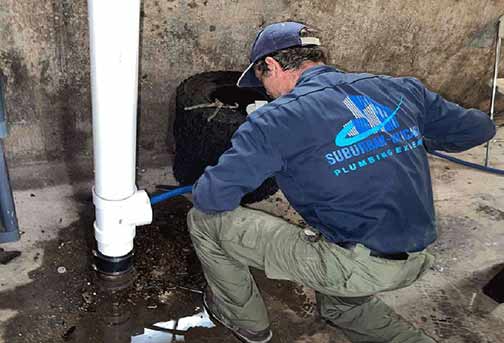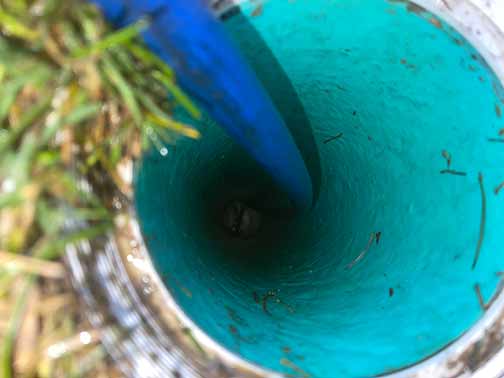
The plumbing system in your home is where some of the most stubborn maintenance issues in the house hide, warns Pros Realty Management team. This is partially due to the size and complexity of the plumbing. But also because of the level of use and abuse plumbing systems are subjected to.
Among these stubborn maintenance issues, the most difficult ones to diagnose are problems in your home’s drainage system. Drain problems in your home not only disguise themselves as other kinds of maintenance issues but their impact is often pervasive.
Examples of common drainage problems in the home that are hard to fix include:
- Debris buildup: Debris doesn’t always build inside a drain line because of misuse but as a natural consequence of how the system is designed to work. Over time, debris may accumulate to the point where it even prevents the normal function of the drain.
- FOG and soap scum: “FOG” means fats, oils and grease. Soap scum is an off-white deposit that forms when hard water mixes with soap. When soap sum meets FOG it creates an insoluble mass that can clog drain lines and is very difficult to get rid of.
- Bad odors: Chronic bad odors in your home often originate from deep inside your drain lines. Bad odors from drains have a range of causes; trapped sewer gases backing up into the home and decaying food scraps inside the pipes, are just two examples.
- Pest infestation: All kinds of pests can invade your home from inside the drain lines. Clogged drainpipes provide a perfect breeding ground for a variety of pests; mosquitoes, houseflies, fruit flies, roaches, and a host of other types of vermin.
How to fix stubborn issues in your drainage system
The common factor in every one of the chronic drainage issues mentioned above is they are all the direct or indirect result of built-up debris within the drainpipes. This means that the problems can be solved or prevented if the buildup inside the line is removed.
How do you remove buildup from your drains and sewer lines? To do this you need a way to reach into the pipes and clear the gunk hiding there. The most effective way to do this is with a drain-cleaning method known as HYDRO-JETTING.

What is hydro-jetting?
Hydro-jetting is a cutting-edge drain-cleaning method. It uses the power of pressurized water to blast debris out of drainpipes and sewer lines. A stream of high-pressure (hot or cold) water is fired into the pipes to clear away all stubborn obstructions in the system.
Hydro-jetting uses water pressures of between 1500 and 4000 psi (pounds per square inch); enough force to break up even the worst kinds of deposits. But this method doesn’t just stop at dislodging debris from your drains, it also washes the pipes and sewer line.
To hydro-jet a clogged drain, a flexible hose is inserted into it via a cleanout, floor drain, or toilet. This hose carries a high-pressure stainless steel nozzle at one end, while its other end is attached to a pressurizing machine that is in turn hooked up to a water tank.
To start the operation, the right water pressure is first selected. This will depend on the type of pipes in the system, their physical condition, and the nature of the debris inside the line. The right water pressure ensures maximum effectiveness, while also protecting the pipes.
Once the pressurizing machine is switched on, a jet stream of water is pushed into the pipes via the nozzle head. Because the nozzle-head has backward and forward-facing nozzles, the water pressure drives it forward into the pipeline, also ensuring a thorough cleaning.
The advantages of hydro jetting over other drain-cleaning methods
Highly effective: Hydro-jetting will remove the most difficult types of buildup, including sludge, grease, scale, or even tree roots. This is the best method if you are dealing with mineral buildup and tree root invasion in your drainage system.
Hydro-jetting is safe: Unlike chemical drain cleaners, hydro-jetting will not damage your pipes. This method does not use toxic chemicals. However, when dealing with older pipe systems, it is important to work with an experienced plumber.
Quick and non-invasive: You do not need to excavate your lawn to hydro-jet your drains. Furthermore, hydro-jetting does not take time a lot of time. That means minimal disruptions to your household’s day-to-day activities when using this method.
Comprehensive cleaning: Other drain-cleaning methods such as sewer rodding service leave the dislodged debris inside your pipes, where it can continue to cause problems. Hydro-jetting will completely clear the dirt out of your drains and even wash the surface of the pipes.
Preventive maintenance: Hydro-jetting is great for preventive maintenance. Hydro-jetting your drains once a year prevents the buildup of debris, ensuring optimal performance of the system at all times. This will not only save you money, it help you avoid stress.
What is the first step when planning to hydro-jet your drainage system? You need to find a licensed and reliable plumber who specializes in drain cleaning. Your preferred plumber should have up-to-date hydro-jetting equipment and a track record of excellent service.

